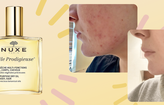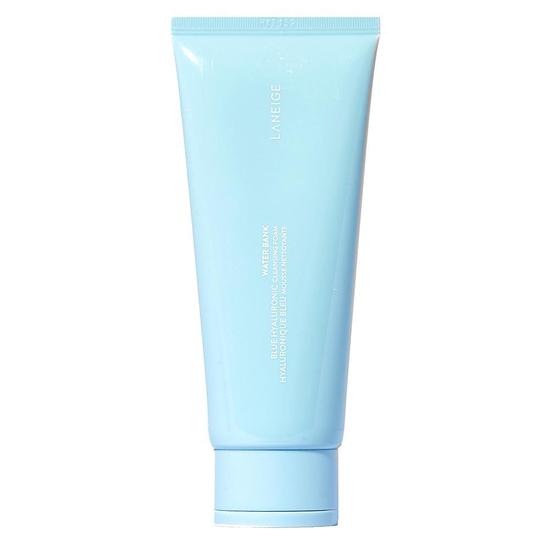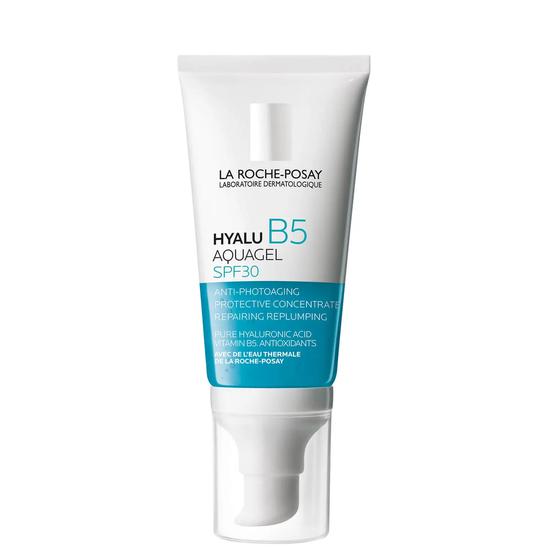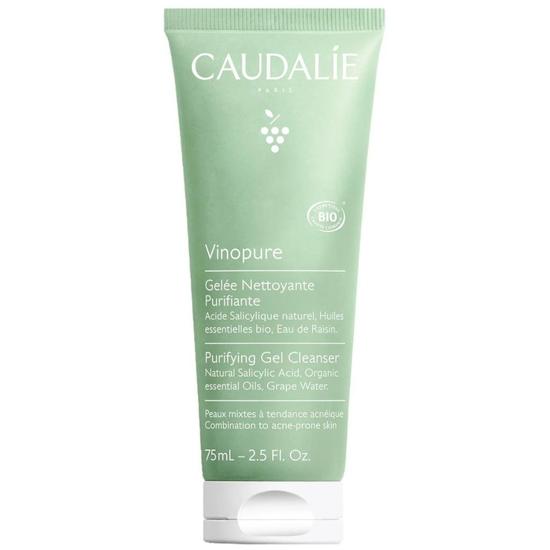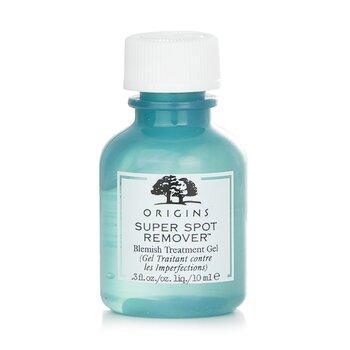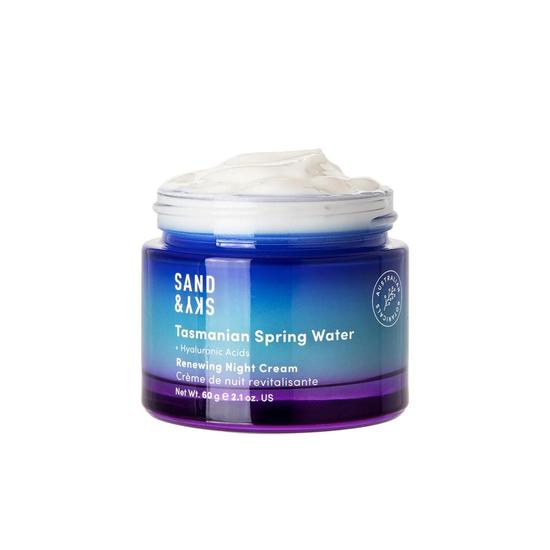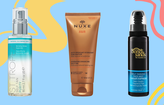
- Skin
- Salicylic Acid With Hyaluronic
Can You Use Salicylic Acid With Hyaluronic Acid?
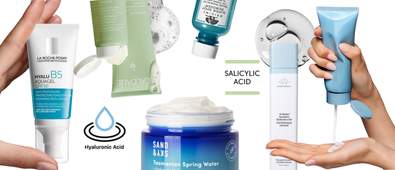
Salicylic acid has some great benefits. It's a skincare active that is exfoliating, clarifying and effective. For some, however, it can prove quite strong and—at more potent strengths—drying, or even irritating. That's where hyaluronic acid comes in. Famed for it's hydration properties, this is another hardworking ingredient that can work in tandem with a BHA like salicylic acid, either in the same routine or same formula.
Can You Use Salicylic Acid With Hyaluronic Acid?
Yes - and they actually make for a good pairing.
Salicylic acid is a beta-hydroxy acid (BHA) known for its deep-cleansing exfoliation and ability to unclog pores, making it a go-to for oily and acne-prone skin. Hyaluronic acid, on the other hand, is a powerful humectant that draws moisture into the skin. While one exfoliates, the other hydrates—making them an ideal pairing for balanced skin.
The key is layering them correctly to avoid over-drying or irritation. Typically, salicylic acid comes first, followed by hyaluronic acid to rehydrate and restore moisture.
What Does Salicylic Acid Do For Skin?
Salicylic acid is an oil-soluble BHA that penetrates deep into the pores, dissolving excess sebum and dead skin cells. It’s especially effective for blackheads, whiteheads, and acne due to its anti-inflammatory and exfoliating properties.
Key benefits of salicylic acid include:
- Deep Cleansing: Unclogs pores and clears out excess oil
- Exfoliates Inside Pores: Unlike AHAs that exfoliate the surface, salicylic acid works within the pore lining
- Reduces Acne: Targets whiteheads, blackheads, and inflammatory acne
- Anti-Inflammatory: Soothes active breakouts and calms redness
- Smooths Texture: Regular use can refine skin texture and reduce bumpiness
- Oil Control: Helps regulate sebum production for less shine
(Source: Cleveland Clinic, Bioderma)
Salicylic Acid: Best for oily, acne-prone, or textured skin
- Oily Skin: Helps regulate shine and reduce breakouts
- Acne-Prone Skin: Penetrates deep to clear congested pores
- Combination Skin: Use in oily areas (T-zone) and follow with hydration
- Dry or Sensitive Skin: Use cautiously and infrequently; always follow with moisture
What Does Hyaluronic Acid Do For Skin?
Hyaluronic acid is a naturally occurring molecule that can hold up to 1000 times its weight in water. It attracts moisture from the environment and draws it into the skin, making it look plumper and more hydrated. While it doesn’t exfoliate or treat acne directly, it is essential for maintaining skin barrier health and softness.
Key benefits of hyaluronic acid include:
- Hydration Boost: Binds water to the skin, keeping it supple and plump
- Barrier Support: Strengthens the skin barrier to resist environmental stressors
- Reduces Fine Lines: Temporarily smooths out fine lines caused by dehydration
- Soothes Skin: Especially beneficial after exfoliating treatments or active ingredients
- Non-Comedogenic: Provides hydration without clogging pores
- Enhances Absorption: Helps actives penetrate better when layered over damp skin
(Source: Cleveland Clinic, Bioderma)
Hyaluronic Acid: Ideal for all skin types
- Dry Skin: Provides essential moisture without heaviness
- Oily/Acne-Prone Skin: Hydrates without greasiness or pore-clogging
- Sensitive Skin: Gentle and non-irritating—often used post-procedure
- Mature Skin: Helps smooth fine lines and retain skin bounce
Why Do Salicylic Acid And Hyaluronic Acid Work Well Together?
Salicylic acid can be drying, especially if used frequently or in high concentrations. Pairing it with hyaluronic acid offsets this effect by replenishing moisture and preventing the tight, flaky sensation that often accompanies exfoliation.
Using hyaluronic acid post-exfoliation also helps calm the skin, reduce potential irritation, and support a healthy barrier—key for consistent use of stronger actives like salicylic acid.
When used together correctly, this duo provides:
- Pore-Clarifying + Hydrating Power: Keeps breakouts at bay while maintaining skin softness
- Textural Refinement: Smooths uneven areas without drying them out
- Oil Balance: Controls excess oil without stripping
- Improved Product Tolerance: Reduces sensitivity to salicylic acid when paired with a humectant
Comparing Salicylic Acid And Hyaluronic Acid Side-By-Side
- Exfoliation: Salicylic acid ✅ Deep pore exfoliation | Hyaluronic acid ❌ None
- Hydration: Salicylic acid ❌ Can dry skin | Hyaluronic acid ✅ Hydrating and plumping
- Reduces acne: Salicylic acid ✅ Yes, especially blackheads | Hyaluronic acid ❌ No direct effect
- Smooths texture: Salicylic acid ✅ Refines roughness | Hyaluronic acid ✅ Adds softness
- Improves skin barrier: Salicylic acid ❌ Can impair if overused | Hyaluronic acid ✅ Supports barrier
- Soothes skin: Salicylic acid ❌ May sting or irritate | Hyaluronic acid ✅ Calms and hydrates
- Suitable for sensitive skin: Salicylic acid ⚠ Use with caution | Hyaluronic acid ✅ Very suitable
Hyaluronic acid also works well with:
- Ceramides – lock in hydration and repair skin barrier
- Niacinamide – brightens and strengthens skin tone while hydrating
- Panthenol – boosts moisture retention and soothes irritation
Salicylic acid also works well with:
- Niacinamide – calms inflammation and reduces post-acne marks
- Zinc – regulates oil production and supports healing
- Clay masks – deep-cleanse pores when used sparingly
How to apply salicylic acid and hyaluronic acid together
- Use salicylic acid first: cleanse your face, then apply your salicylic acid toner or serum. Wait for it to absorb fully.
- Follow with hyaluronic acid: while your skin is still slightly damp or after a light mist, apply a few drops of hyaluronic acid serum and gently pat in.
- Seal with a moisturiser: this helps lock in hydration and protect the skin barrier.
- Finish with sunscreen in the morning: both acids can increase your skin’s sensitivity to UV rays, especially if using other actives.
Avoid layering salicylic acid with other strong actives (like retinol or AHAs) on the same night unless under dermatologist guidance.
A.M.
P.M.
FAQs
Can I use salicylic acid and hyaluronic acid every day?
Yes, if your skin tolerates it well. Start with alternate days and gradually build up to daily use, always applying a moisturiser afterwards.
Should I apply hyaluronic acid before or after salicylic acid?
After. Salicylic acid needs to penetrate first to exfoliate and clear pores. Hyaluronic acid should follow to restore hydration.
Can I use them in both my morning and evening routines?
Yes, though many prefer using salicylic acid at night to avoid sun sensitivity. Hyaluronic acid is fine for both AM and PM use.
Now you know how to combine and layer hyaluronic acid, take your routine one step further by finding out How to Use Hyaluronic Acid in Your Routine for the Best Results. Still apprehensive about applying an exfoliating acid like salicylic acid? For gentler results, use this clarifying ingredient in a toner as opposed to a serum or treatment. Browse through 12 of the Best Salicylic Acid Cleansers for further inspiration.

Written by Maria Mukaranda
Maria’s background is rooted primarily in creative media and a love for all things written, expressed through experience both online and in print; for creative platforms spanning from music to fashion to beauty.
Top Posts

